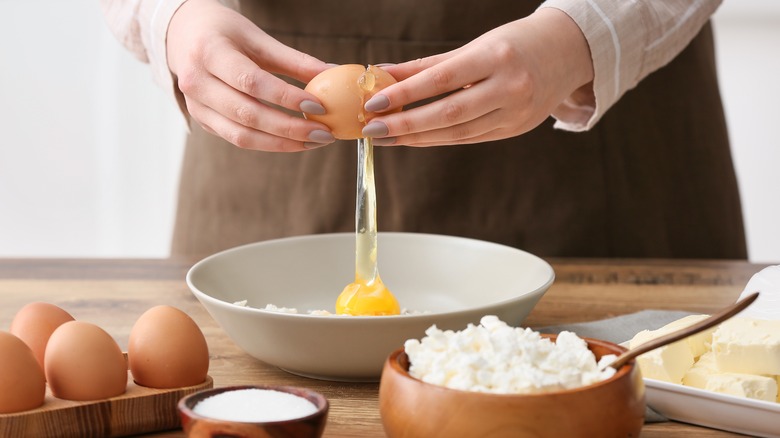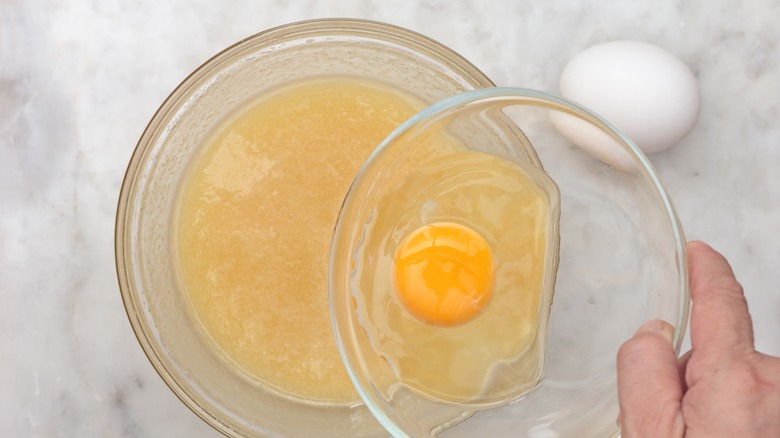Why You Should Always Add Eggs One At A Time When Baking
There are numerous rules to follow when baking, from touchy temperature tips to obsessive organizational notes. Some make sense; others can feel a little strange. Why, for instance, are you expected to add ingredients like eggs one at a time, while you can add in something like sugar all at once?
Well, the wisdom of this rule has much to do with the chemical makeup of the eggs. Though there is plenty of protein and fat in eggs, the majority of it is made up of water. When making a cake batter or cookie dough, you often begin by creaming sugar and butter or some other type of fat. Then, you'll add in your eggs. What this basically means is you are adding water to fat, which makes for a lumpy mixture.
Luckily, egg yolk has lecithin, which helps create an emulsion between the water and fat. The only tricky part is that lecithin needs a gentle, steady mix to make an emulsion. If you add your eggs all at once, you'll overwhelm the lecithin with too much water, creating a clotted mixture. The consequence of this un-emulsified batter can lead to tough cookies, lopsided cakes, and flat, dense muffins. So let's break down the proper way to add in your eggs, one at a time.
Making the smoothest batter possible
To begin with, start with room-temperature eggs. You shouldn't use cold eggs because they are harder to mix into the batter thoroughly and can risk re-solidifying the fat in the butter. Second, you need to give each egg plenty of time to emulsify, mixing for at least 30 seconds and up to a minute per egg. You'll know you've properly mixed the eggs in when the batter looks homogenous and glossy, rather than dull and curdled.
Third — and some would argue most importantly — you need to make sure that you're scraping the bowl and beaters with a spatula after each period of mixing. Bits of creamed butter and sugar tend to stick to spots the beaters don't reach. So, when you ladle your batter into your assorted pans, you'll have stubborn butter streaks that were never properly emulsified with the eggs. A simple swipe of a silicon spatula should help you sidestep this issue. If you follow these tips when adding in your eggs, you'll note the difference in the superior structure, texture, and taste of your baked goods.

